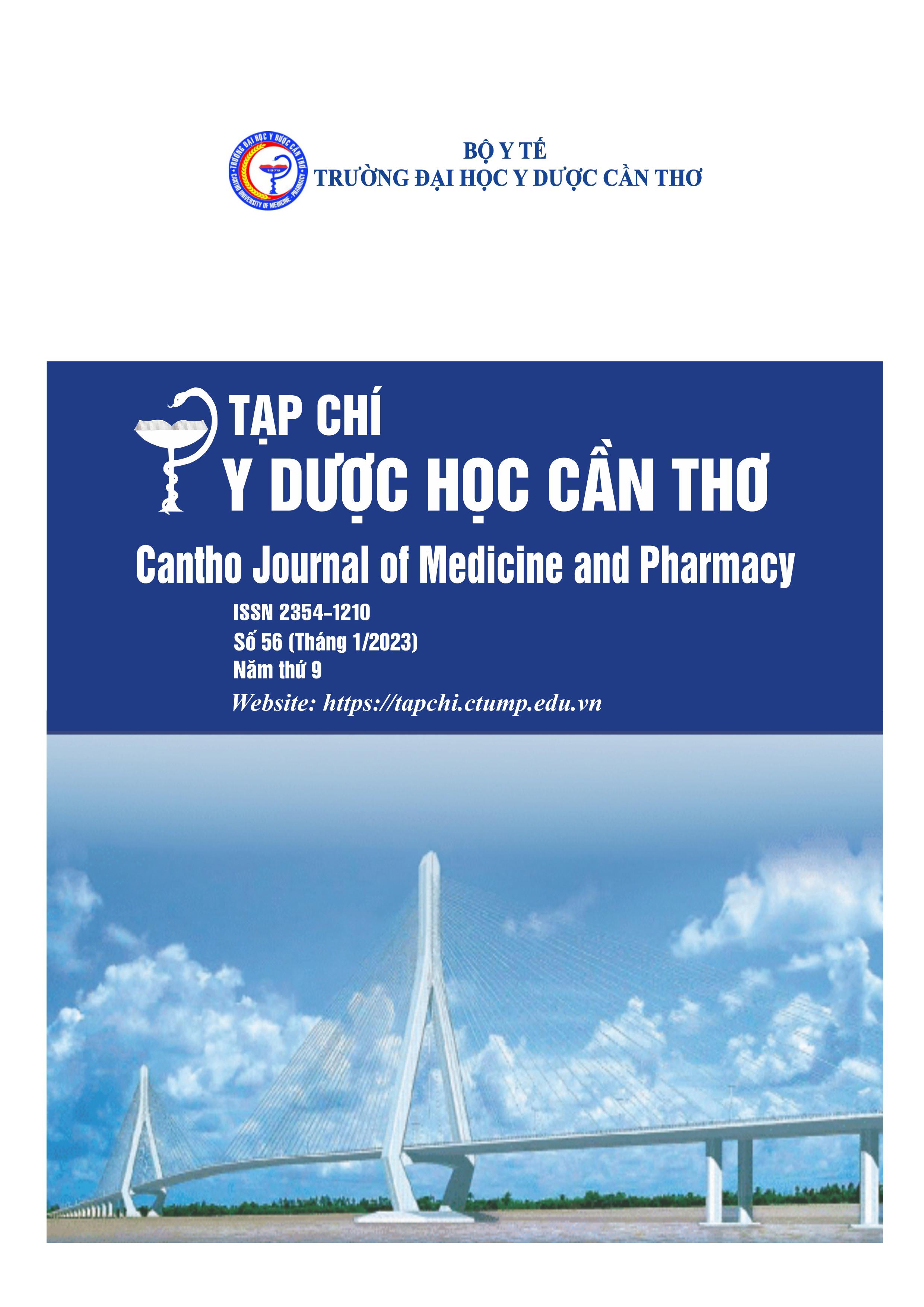STUDY ON CLINICAL FEATURES, RISK FACTORS AND ASSESSMENT OF FRECKLES TREATMENT RESULTS BY LASER Q-SWITCHED ND: YAG WITH TRI-WHITE SERUM AT CAN THO UNIVERSITY OF MEDICINE AND PHARMACY HOSPITAL IN 2021-2022
Main Article Content
Abstract
Background: Freckles are typical pigmentation disorders presenting by hyperpigmentation dark - brown or light - circular brown spots on face, especially on the cheeks, it can appear on all types of skin tones and have a significant impact on the beauty. Currently, many methods are applied to treat freckles. However, the effectiveness of Q-switched Nd: YAG laser combination Tri-white Serum in freckles treament is still not clearly. Objectives: To describe clinical features, risk factors and evalute the results of Q-switched Nd: YAG laser combination Tri-white serum in the treatment of freckles. Materials and methods: A descriptive cross-sectional study of 70 patients having freckles at Can Tho University of Medicine and Pharmacy hosiptal from 4/2021-4/2022. Results: 100% female with the average age of 35.04 ± 8.148 and the mean duration of disease was 6.06 ± 2.963 years. The distribution location is mostly concentrated in the nose and cheeks (78.6%). At the end of treatment, the good and very good levels of improvement were noted in 86.5% of patients. The adverse events are not usually long-term and post inflammatory hyperpigmentaion was in 7.1% of patients. Conclusion: Combination Q-switched Nd: YAG and Tri-white Serum is a safety anh effective choice in freckles treatment.
Article Details
Keywords
Freckles, Q-switched Nd: YAG laser, FOB Tri-White serum
References
2. Bùi Mạnh Hà,Lê Thái Vân Thanh (2020), "Đặc điểm lâm sàng và các yếu tố liên quan của đốm nâu và tàn nhang", Tạp chí Da Liễu học Việt Nam. Số 3 tr. 44-50.
3. K Ezzedine, E Mauger, et al. (2013), "Freckles and solar lentigines have different risk factors in Caucasian women", Journal of the European Academy of Dermatology and Venereology. 27(3), pp. e345-e356.
4. Khadiga S Sayed, Samar Tuqan, et al. (2021), "Q‐Switched Nd: YAG (532 nm) Laser Versus Intra‐Dermal Tranexamic Acid for Treatment of Facial Ephelides: A Split Face, Randomized, Comparative Trial", Lasers in surgery and medicine. 53(3), pp. 324-332.
5. Rolfpeter Zaumseil, Klaungroupe (1998), “Topical Hydroquinone in the treatment of melasma”: Pharmacological and clinical consideration. pp. 25-45
6. Sun, Hua-Feng, et al., (2018), "Chemical peeling with a modified phenol formula for the treatment of facial freckles on asian skin." Aesthetic plastic surgery 42(2), pp. 546-552.
7. Tian, B. (2017), “ Treatment of Freckles Using a Fractional Nonablative 2940nm Erb: YAG Laser in a Series of Asian Patients”, The Journal of clinical and aesthetic dermatology, 10(8), pp. 28
8. Wang Chia-Chen, Yuh-Mou Sue, et al. (2006), "A comparison of Q-switched alexandrite laser and intense pulsed light for the treatment of freckles and lentigines in Asian persons: a randomized, physician-blinded, split-face comparative trial", Journal of the American Academy of Dermatology. 54(5), pp. 804-810.
9. Ward W. H., et al. (2017), "Clinical Presentation and Staging of Melanoma", Cutaneous Melanoma: Etiology and Therapy, Codon Publications.


